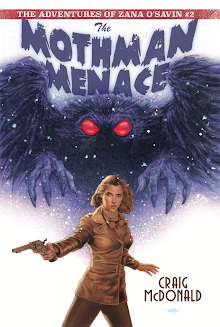
Art imitates life; death imitates art?
About a year ago (in my pre-official blog site days), I put together a post regarding the second novel in the Hector Lassiter series, Toros & Torsos, and the fact it spins on the premise that surrealist art and aesthetic theory may have informed or inspired several bloody, unsolved crimes of the 20th Century — most notably the murder of Elizabeth Short, the so-called “Black Dahlia,” as she was dubbed by panting L.A. journalists circa January 1947.
The correspondences between Elizabeth Short’s mutilation murder and photographs and paintings by Man Ray and Salvador Dali were first put forth by Steve Hodel in his 2003 nonfiction study Black Dahlia Avenger, a New York Times notable book and Edgar® Award finalist. (To be fair, James Ellroy had made a particular painting an element of his 1987 novel based on the Dahlia murder.)
Hodel’s theories were greatly expanded upon by Mark Nelson and Sarah Hudson Bayliss in their excellent 2006 release, Exquisite Corpse: Surrealism and the Black Dahlia Murder.
Using the Nelson, Bayliss and Hodel works as a springboard, I extrapolated outward to construct a multi-decade saga that encompasses not only the Dahlia murder and the post-war Hollywood surrealist art circle (which included such diverse personalities as John Huston, Fanny Brice and Vincent Price), but also the Spanish Civil War in which the surrealists played a pivotal propaganda role.
Further research in that area uncovered allegations of jaw-dropping reports of Spanish torture chambers designed and constructed to surrealist aesthetics — a sort of crazy cross between Escher and Abu Ghraib.
I mixed in some female torsos that began turning up in the vicinity of Ernest Hemingway’s Cuban home in the 1950s…actual mutilation murders touched on by Hemingway in the published version of his posthumous novel, Islands in the Stream.
It takes a strong stomach and a cold eye to confront the evidence put forward in the Hodel and Nelson/Bayliss books — particularly in Exquisite Corpse. But once key surrealist works are compared to Elizabeth Short’s autopsy photos (reproduced in graphic detail in the Nelson/Bayliss books) it’s difficult to shake the notion surrealist imagery was very much on the mind of Betty Short’s twisted, never-apprehended killer.
Life imitating art…art imitating death, and for some, it seems, it wasn’t truly art until somebody died.
Well, that was then. I posited my killer surrealists operating in the period between 1935-1959.
Late last year, Woody Haut, author of the excellent crime fiction studies Pulp Culture and Neon Noir, among others, very kindly reviewed Toros & Torsos. In passing, he noted, “And don't think surrealist murders are simply the stuff of urban legend. In the part of the world where I'm currently living, near Perpignan, there were a handful of such murders a few years back, the corpses of which supposedly replicated paintings by Dali.”
Over the holidays, I finally had a few minutes to follow up on that intriguing aside of Mr. Haut’s. I found this article from The Guardian regarding those Dali-esque crimes…
Occasionally, you find yourself the subject of these remarks about the plots of your novels turning on an “outrageous” or “absurd” premise, or you get the left-handed compliment that your novel works despite its “far-out concept” that surrealist art might inspire serial murder.
Yeah, well… Maybe you can’t make this stuff up.
From the March 9, 2000 edition of the Guardian: “Police are wondering if they are not dealing with a serial killer inspired by the tortured visions of Salvador Felipe Jacinto Dali i Domenech, born May 11 1904, died January 23 1989. ‘It's a theory they've tested and are continuing to test,’ says Mohamed Iaouadan, a lawyer. ‘I've seen the files, believe me. They've commissioned analytical reports from art experts on the significance of Dali paintings.’”
As the lawyer quoted in the article goes on to say, “I'm not sure what I think. Maybe it's madness, this Dali stuff. But killers are inspired by films, aren’t they? Why not by decapitations, eviscerations and dismemberments in the painting of the man who made this town famous?”
For more on the contemporary “Dali” case, you can check out the full (and very graphic) account of the crimes in the Guardian here.






































Thank you so much for that, Alisha.
ReplyDeleteAs far as fiction goes, I've tended to think, "If I can imagine it - somebody else has probably done it."
ReplyDeleteGreat stuff, Craig
Thanks, Jed. I keep thinking of Nero's alleged last words: "Dead! And so great an artist!"
ReplyDelete